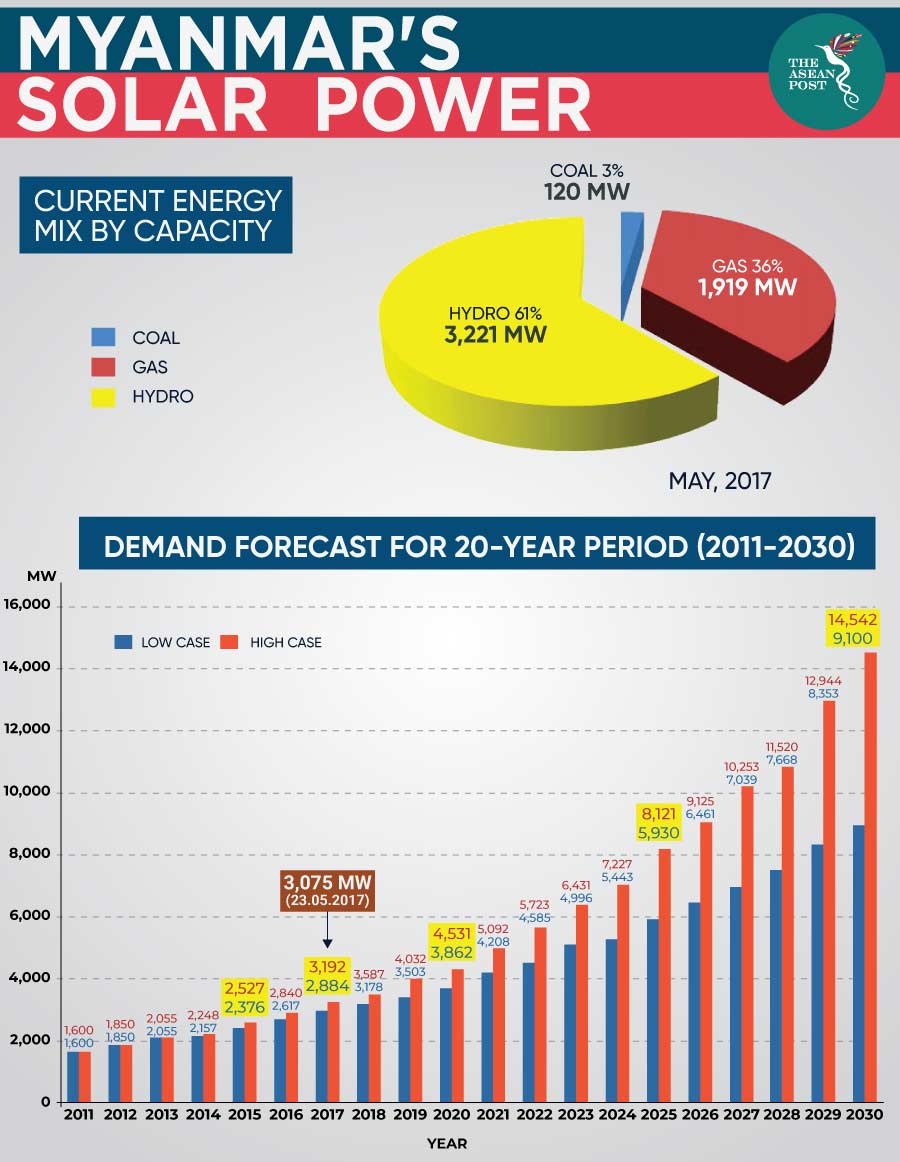The ASEAN Post recently published an article on extreme climate in Myanmar and its threat to the locals, agriculture, ecosystems and more. It is said that Myanmar is one of the most vulnerable countries at risk of climate crisis. Extreme droughts and flooding in recent years and cyclones such as Nargis have affected millions of locals and cost thousands their lives. Natural disasters are one of the major impacts of climate change.
According to a report by Myanmar’s Ministry of Planning and Finance titled, ‘Myanmar Sustainable Development Plan 2018-2030’, the country penned several action plans to address the climate situation. One of the strategies is to scale-up the use of renewable energy resources in the country. The report also stated that Myanmar will embark on a low-carbon, green economy development trajectory that prioritises the efficient use of natural resources.
Today, hydropower is the main source of energy powering electricity generation in Myanmar; making up two-thirds of the total electricity produced in the country. The rest comes from fossil fuels, with gas as the main fuel followed by coal and oil. In 2018, electricity generation from hydropower generated a record 4,200 terawatt hours (TWh), which is the highest ever contribution from a renewable energy source, according to the International Hydropower Association (IHA), an organisation that represents the global hydropower sector.

Despite the benefits of hydropower, this form of renewable energy is not entirely free of greenhouse gas (GHG) emissions as the release of carbon dioxide (CO2) tends to happen during the construction of dams for hydroelectricity. The building of hydropower dams has also sparked concerns about biodiversity loss and environmental disasters.
Some argue about the advisability of building dams, especially large ones, as it might affect people living downstream. Dam failures could be catastrophic as flooding might occur. According to media reports, there has been stress on major rivers posed by dams, especially the Irrawaddy and Salween rivers that flow down from the Myanmar mountains and Himalayan glaciers.
Based on the ‘Myanmar Climate Change Strategy 2018-2030’, a report by the Ministry of Natural Resources and Environmental Conservation (MONREC) in the country, climate change such as heat waves could affect power generation and distribution as the number of very hot days rise. The generation of hydropower, a main source of renewable energy and revenue for Myanmar, may suffer from prolonged and unpredictable periods of drought, and intense rainfall.
Consequently, in the Myanmar Sustainable Development Plan 2018-2030 report, developing an appropriate energy generation mix is crucial, including carefully managing the balance between renewable and non-renewable sources.
Currently, only about 40 to 50 percent of the population have access to electricity in Myanmar. While in rural areas, the number further drops to as low as 20 percent. According to ‘Myanmar: Solar investment opportunities’ published by SolarPower Europe – a Belgium-based organisation which advocates the use of solar – Myanmar has introduced an ambitious renewable energy goal, which is to increase the share of renewables in electricity production to eight percent by 2021 and 12 percent by 2025.
In 2019, Myanmar’s State Counsellor, Aung San Suu Kyi launched the initial phase of the country’s first commercial solar-power plant in Minbu, Magwe Region, adding 40 megawatts (MW) of power to the national grid. The power-plant is part of a longer-term goal which is to achieve 100 percent electrification by 2030. Suu Kyi added that the country will not rely on any single source of energy.
Based on the SolarPower Europe report, the life-time cost for solar power plants is rather economical. Apart from that, solar power can effectively counter-balance the electricity shortage during the dry season, while not occupying too much grid capacity during the rainy season. Media reports stated that Myanmar produces between 2.9 gigawatts (GW) and 3.1 GW of electricity – which is just enough for 44 percent of the country’s population of 55 million people. However, the Minbu solar-power plant alone is said to be able to generate five percent of the nation’s current power demand.
Myanmar’s energy needs are largely met with hydropower, but its environmental, geopolitical and social costs are now growing concerns for the country. Solar energy is said to be one of the most eco-friendly energy generation sources – despite some of its flaws such as the decrease of solar radiance by 50 percent during the rainy season, according to the Asian Development Bank (ADB). However, solar energy has the potential to help Myanmar on its journey to a greener future and to electrify the entire country in 10 years.
Related articles:
